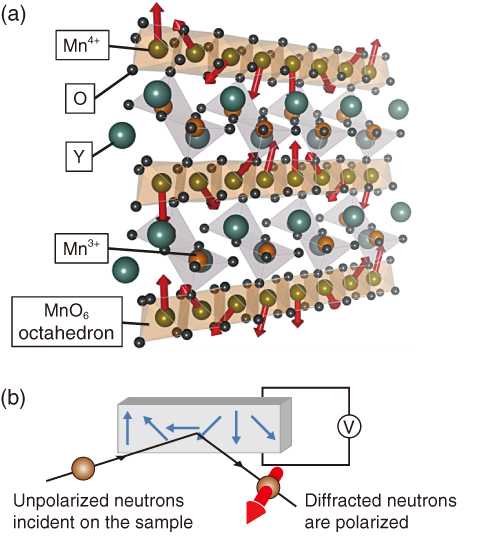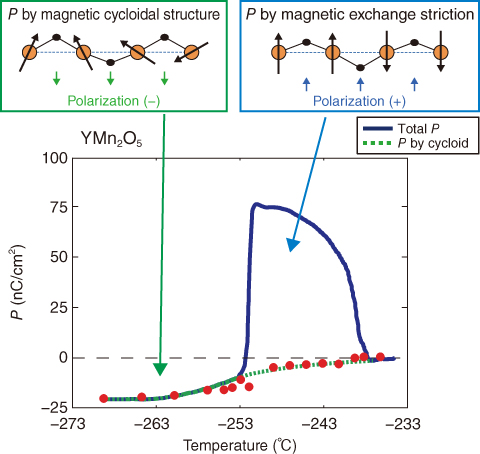
Fig.5-15 Cycloidal structure of YMn2O5 and experimental set-up
 ) form a cycloidal structure.
) form a cycloidal structure. ) aligns the diffracted neutron spins.
) aligns the diffracted neutron spins.

Fig.5-16 Polarization (P) in YMn2O5
We successfully distinguished the electric polarization induced by magnetic chiral structures and magnetic exchange striction in multiferroic compounds by simultaneously measuring the spontaneous polarization and polarized neutron diffraction.
The magnetoelectric (ME) effects of multiferroic compounds arise from coupling between magnetism and ferroelectricity. This characteristic of multiferroic compounds is expected to be exploited in future devices. Below 240 ℃, RMn2O5 compounds (where R denotes the rare-earth element Bi or Y) establish ferroelectricity and magnetic order as their Mn4+ spins spontaneously form cycloidal arrangements (Fig.5-15(a)). Below −250 ℃, this system displays a rich variety of ME effects depending on the R atoms. The origin of the ME effect in this compound has been explained by two models, one driven by the cycloidal structure and the other by magnetic exchange striction. However, the correct model has yet to be clarified.
We found that both models can be distinguished by the character of polarized neutrons which can detect cycloidal structures. To this end, we performed polarized neutron diffraction measurements on a single YMn2O5 crystal. The electric polarization was controlled by electric fields provided by electrodes attached to the crystal surface. Fig.5-15(b) shows a schematic of the experiment. By simultaneously measuring the chirality of the cycloidal structure and the electric polarization in the presence of an electric field at different temperatures, we found that exchange striction occurs below −238 ℃ (as evidenced by the positive polarization in Fig.5-16), whereas a magnetic cycloidal structure develops below −253 ℃ (giving rise to negative polarization). Given the rich ME effects below −253 ℃, we infer that polarization induced by cycloidal structures is an important property of multiferroic materials, and can be exploited in future applications.
The present study was accomplished in collaboration with Tohoku University and is summarized in the Reference.